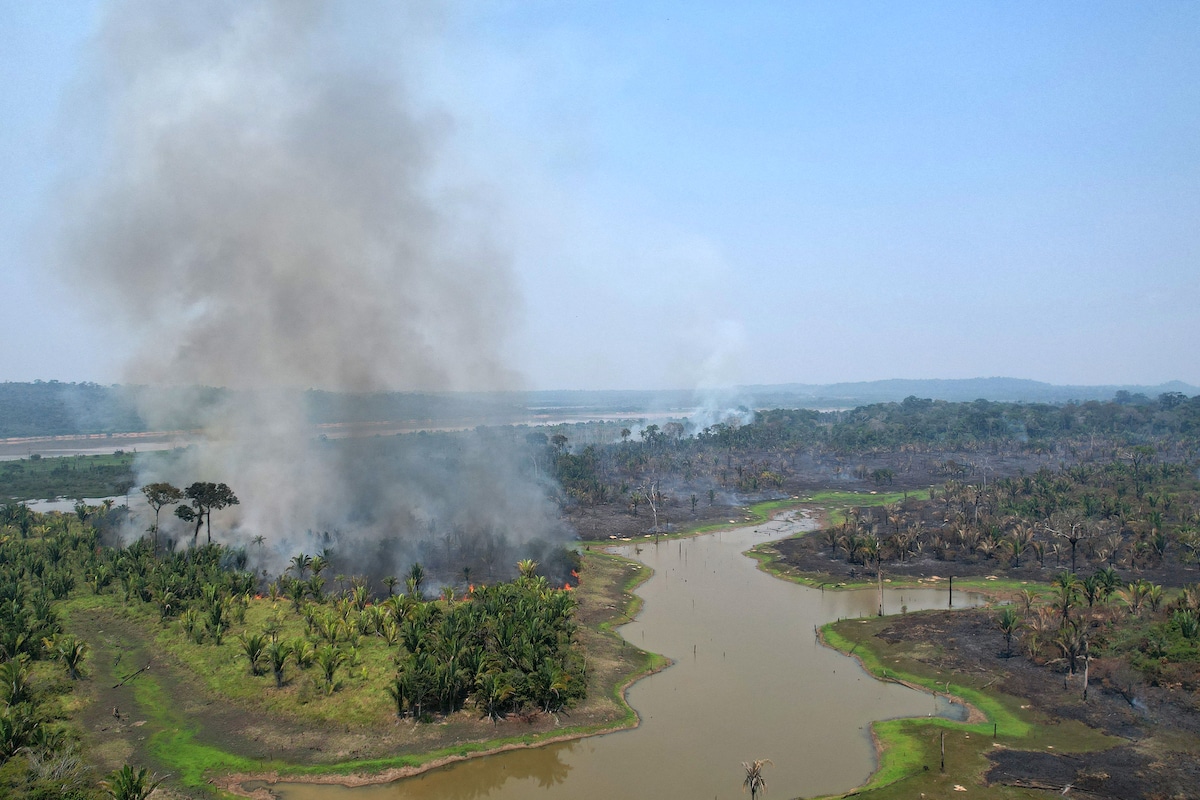Much of the Amazon Rainforest Has Hit a Tipping Point and Might Not Recover, Major Study Finds

 Why you can trust us
Why you can trust us
Founded in 2005 as an Ohio-based environmental newspaper, EcoWatch is a digital platform dedicated to publishing quality, science-based content on environmental issues, causes, and solutions.
A new study from scientists and Indigenous organizations has found that many parts of the Amazon rainforest are already at their tipping point, meaning they face a point of no return when it comes to recovery.
“The tipping point is not a future scenario but rather a stage already present in some areas of the region,” the report concludes. “Brazil and Bolivia concentrate 90% of all combined deforestation and degradation. As a result, savannization is already taking place in both countries.”
Savannization refers to the changing of a forested area into a savanna, or plains with few to no trees. The report, Amazonía Against the Clock, outlines issues in the Amazon rainforest across nine countries. Transformation is already evident in 34% of the Amazon located in Brazil and 24% of the rainforest in Bolivia. The tipping point is also near for 16% of the forest in Ecuador, 14% of the Colombian Amazon and 10% of the rainforest in Peru. These are the countries with the highest rates of transformation of the Amazon rainforest and are at the highest risk of not recovering.
The report was created by the Amazonian Network of Georeferenced Socio-Environmental Information and the Coordinator of Indigenous Organizations of the Amazon Basin. The findings reveal that only two countries, Suriname and French Guiana, have more than 50% of their portions of the Amazon still untouched. In the other seven countries, about 2% to 25% of their portions of the rainforest have been lost, 26% to 43% of their parts of the forest are intact, and the rest of the land has experienced some level of degradation but is not yet lost.
Although the report expresses some dire concerns, there is hope. Collectively, there’s still a chance of saving 80% of the Amazon by 2025, but this target is crucial to safeguarding the rainforest. It will be difficult, too, as only 74% of the original forest remains today, The Guardian reported.
To meet this goal, the report authors note four major efforts that need to happen, including 1) respecting Indigenous rights, 2) keeping biodiversity in mind, 3) reducing deforestation from agriculture, mining, oil blocks and other drivers, and 4) forgiving debt of Amazonian countries to improve economies and reduce reliance on extractive activities.
“Amazon Basin countries are urged to declare a state of emergency and immediately halt the expansion of destructive industrial activities, government policies, and harmful public subsidies that enable further forest destruction,” reads a declaration for preserving the remaining rainforest, which was created by Indigenous leaders. “Industrialized nations must recognize their role in climate change and channel all resources needed to guarantee a just transition for those who inhabit the biome and for their own citizens. The time for action is now.”
Interested individuals, communities, municipalities, and other parties can sign the declaration here.
Subscribe to get exclusive updates in our daily newsletter!
By signing up, you agree to the Terms of Use and Privacy Policy & to receive electronic communications from EcoWatch Media Group, which may include marketing promotions, advertisements and sponsored content.

 233k
233k  41k
41k  Subscribe
Subscribe 




